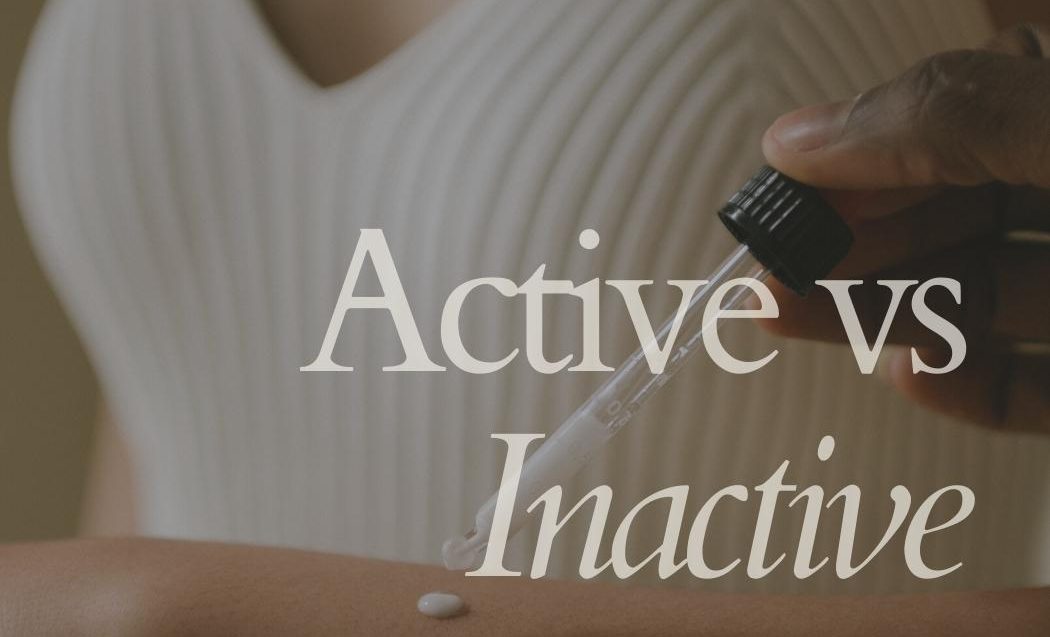When it comes to skin care, you’re bound to hear a lot of buzzwords. “Active” and “inactive” are two of the most common ones. But what do they really mean? And why does it matter which products are which?
Active and inactive ingredients in skincare are kind of like the yin and yang of the beauty world. They work together to create a balanced, healthy complexion. Let’s break down the difference between these two terms.
Active ingredients are the powerhouse ingredients in your skincare products that actually do the work. They’re usually botanical extracts or chemicals that target specific skin concerns. Inactive ingredients, on the other hand, are there to support the active ingredients and help them work more effectively.
Why does this matter? Well, it’s important to choose skincare products that contain both active and inactive ingredients that are right for your skin type. You might think that using more active ingredients means better results, however if you use products with too many active ingredients, you can wind up irritating your skin. On the other hand, if you use products with too few active ingredients, you might not see the results you’re hoping for.
Active Ingredients
In a nutshell, active ingredients are designed to take direct action on the skin. This could be anything from exfoliating dead skin cells, to brightening the complexion, to fighting acne.
While they can be very effective, it’s important to start slowly when using active ingredients. This is because they can sometimes cause irritation, redness or dryness, especially if your skin is not used to them. It’s always best to start with a small amount and build up slowly, so that you can gauge how your skin reacts.
There are many active skincare ingredients that can be beneficial for the skin. Some of these ingredients include:
-Retinoids: These are derivatives of vitamin A and can help to improve the appearance of fine lines, wrinkles, and skin texture.
-Alpha hydroxy acids: These can help to exfoliate the skin and improve the appearance of wrinkles and skin texture.
-Beta hydroxy acids: These can also help to exfoliate the skin and improve the appearance of acne.
-Vitamin C: This ingredient can help to brighten the skin and promote collagen production.
-Niacinamide: Niacinamide is a form of vitamin B3 that has been shown to help improve the appearance of skin tone and texture.
-Allantoin: Allantoin is a healing agent that can help to soothe and calm the skin
Inactive Ingredients
Inactive skincare ingredients provide the perfect support system for active ingredients – they help them work more effectively and allow them to better penetrate the skin. By including inactive ingredients in your skincare routine, you’re essentially giving your actives a boost, and your skin will thank you for it!
Here are some inactives that can be beneficial for the skin:
-Glycerin: Glycerin is a humectant that helps the skin retain moisture.
-Green tea: This ingredient is rich in antioxidants and can help to protect the skin from damage.
-Panthenol: It is a type of alcohol that is used as a humectant, meaning it helps the skin to retain moisture.
-Shea butter: Works as an emollient and helps to soften and moisturize skin.
Do we need both?
Active and inactive ingredients in skincare products work well together because they complement each other’s strengths and weaknesses. Active ingredients are typically more potent and provide more immediate results, while inactive ingredients help to boost and maintain those results over time.
Used together, these ingredients can provide a more well-rounded and effective skincare routine. Active ingredients can target specific concerns, while inactive ingredients can help to address more general skin needs. This combination can help to create a more balanced and healthy complexion.
Can you overdo it?
If you find yourself using more active ingredients than what’s recommended, don’t worry – you’re not alone. We’ve all been there, thinking that if a little bit is good, then a lot must be better. But as the saying goes, you can have too much of a good thing. By overdoing it, it could lead to your skin becoming irritated, red, and inflamed. Not exactly the desired effect! So, what can you do to avoid this fate?
First of all, it’s important to start slowly when using any new active ingredient. Use it once or twice a week to begin with, and gradually increase frequency as your skin adjusts.
If you do start to experience any irritation, redness, or inflammation, immediately reduce frequency or discontinue use altogether. In the meantime, using a gentle, hydrating skincare routine can help to soothe your skin.
Different skin types require different things, but all skin needs both active and inactive ingredients to be healthy. Active ingredients are typically used to target specific skin concerns, like acne or wrinkles. Inactive ingredients are just as important, however, as they help to support the active ingredients and keep the skin balanced.
Without inactives, actives would be far less effective. Inactive ingredients can be thought of as the foundation that active ingredients rely on. Without a strong foundation, the actives would have nothing to build upon and would eventually crumble.
So, next time you’re looking at a skincare product, take a moment to look for both kinds of ingredients. They’re both important for healthy skin!






